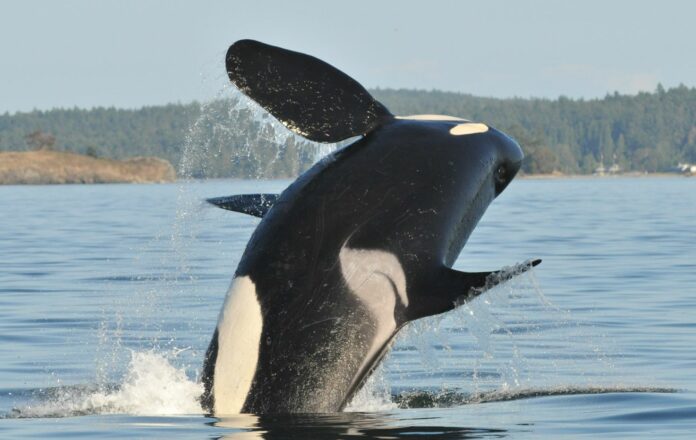Tooth rake marks are commonly observed in killer whales and serve as indications of physical social interactions. These marks are typically acquired through activities such as fighting or rough play. But a new study reveals a different story.
New research reveals that female killer whales in the post-menopausal stage protect their sons but not their daughters from conflicts with other whales. The study, conducted by the universities of Exeter and York, along with the Center for Whale Research, analyzed tooth rake marks, which are scars left when one whale scrapes its teeth against another’s skin. The researchers found that male killer whales had fewer marks if their mother was present and had ceased breeding.
Menopause is a phenomenon observed in only six species, including humans and five species of toothed whales. Scientists have long been puzzled by the occurrence of menopause and its purpose. However, this recent study adds to the growing evidence that post-menopausal female whales enhance the survival prospects of their offspring, particularly their male offspring.
Lead author Charli Grimes from the Centre for Research in Animal Behaviour at the University of Exeter commented, “We were fascinated to find this specific benefit for males with their post-reproductive mother. These males had 35% fewer tooth marks than other males. For males whose mother was still breeding, we found no evidence that her presence reduced tooth rake injuries. We can’t say for sure why this changes after menopause, but one possibility is that ceasing breeding frees up time and energy for mothers to protect their sons.”
Tooth rake marks serve as indicators of physical social interactions among killer whales, usually obtained through fighting or rough play. The research focused on the “southern resident” killer whales, a population living off the Pacific coast of North America. The findings suggest that female killer whales, instead of competing with their daughters for breeding opportunities, have evolved to pass on their genes by supporting their offspring, particularly their sons and future generations.
Grimes explained, “Males can breed with multiple females, so they have more potential to pass on their mother’s genes. Also, males breed with females outside their social group – so the burden of raising the calf falls on another pod.”
Southern resident killer whales primarily feed on salmon and face no natural predators apart from humans. Therefore, tooth marks on their skin can only be inflicted by other killer whales. These interactions occur within social groups or when two pods come into contact.
Regarding how mothers protect their sons, Professor Darren Croft, also from the University of Exeter, explained, “We can’t say for sure. It’s possible that the older females use their experience to help their sons navigate social encounters with other whales. They will have previous experience of individuals in other pods and knowledge of their behavior, and could therefore lead their sons away from potentially dangerous interactions. The mothers might also intervene when a fight looks likely.”
Professor Croft further noted the intriguing similarities with humans, stating, “Just as in humans, it seems that older female whales play a vital role in their societies, using their knowledge and experience to provide benefits, including finding food and resolving conflict.”
Professor Dan Franks from the Department of Biology at the University of York added, “Our findings offer captivating insights into the role of post-menopausal killer whale mothers. They perform protective behavior, reducing the incidence of socially inflicted injuries on their sons. It’s fascinating to see this post-menopausal mother-son relationship deepening our understanding of both the intricate social structures in killer whale societies and the evolution of menopause in species beyond humans.”
The study was supported by the Natural Environment Research Council and published in the journal Current Biology.
Source: 10.1016/j.cub.2023.06.039
Image Credit: David Ellifrit / Center for Whale Research
